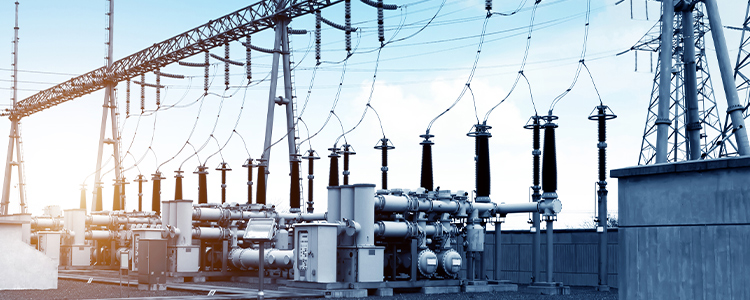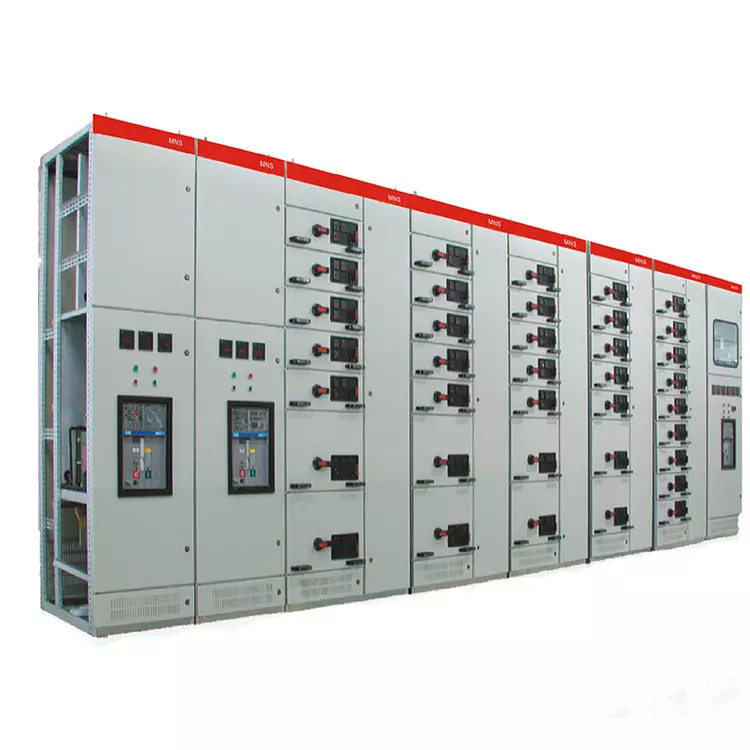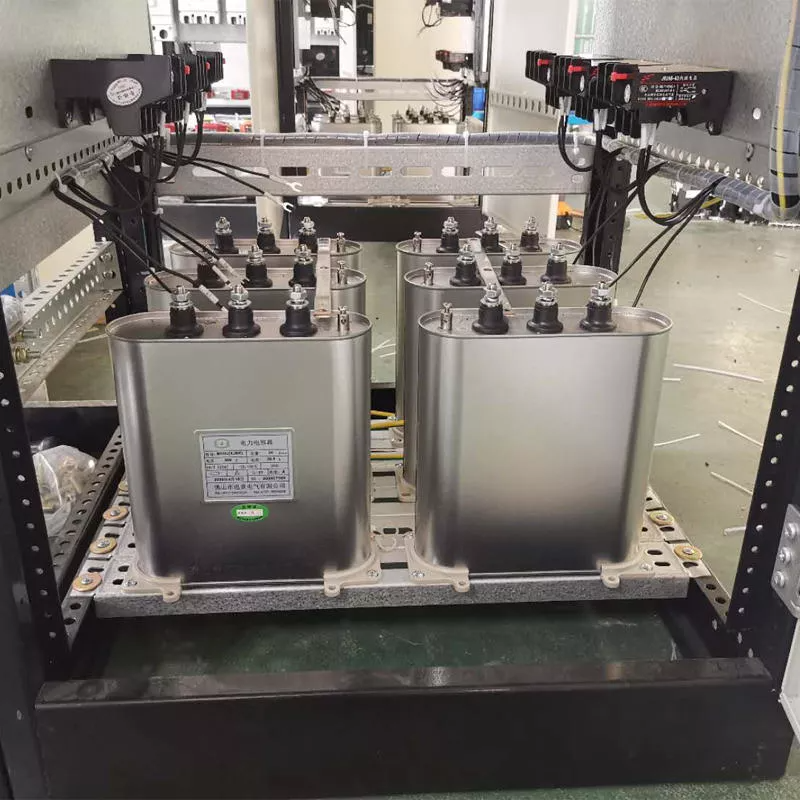- All
- Product Name
- Product Keyword
- Product Model
- Product Summary
- Product Description
- Multi Field Search


Views: 0 Author: Site Editor Publish Time: 2025-08-27 Origin: Site
SHENGTE as a Trusted GCS Low Voltage Drainage Switchgear Supplier
Conclusion: Key Takeaways on Low Voltage Switchgear Architecture
Low voltage switchgear systems play a crucial role in making sure power distribution stays safe, dependable, and smooth in today’s buildings and industries. These setups are especially important in places like factories, office towers, and facilities that use a lot of energy. They bring together different parts for protection, control, and tracking to handle electricity in low voltage setups.
In this piece, we’ll dive into the makeup of low voltage switchgear systems. We’ll look at their electrical parts, physical build, safety features, and how they work with smart tech. Plus, we’ll check out how the GCS Low Voltage Drainage Switchgear from SHENGTE delivers a strong option with top-notch design for tough uses.


Low voltage switchgear is a critical component in electrical power systems, designed to control, protect, and isolate electrical equipment. By managing power distribution, low voltage switchgear helps to prevent equipment damage from short circuits and overloads, thereby minimizing downtime and enhancing operational safety.
Low voltage switchgear means setups made to manage, shield, and separate electrical gear in systems running at voltages up to 1000V AC or 1500V DC. These units are like the backbone of power networks. They help keep things running safely and cut down on delays when issues or changes happen.
The GGD type AC low voltage switchgear is built for AC 50Hz systems with a rated voltage of 380V and current up to 3150A. It shines in changing, sharing, and controlling power in places like power stations, substations, and factory settings.
You can spot low voltage switchgear in all kinds of places, from chemical plants to tall buildings. The GCS low voltage extractive switchgear works well for handling power in low voltage systems at power plants, substations, and even in hotels or mining companies. Often, these spots need central control hubs for motors (MCCs) or power control centers (PCCs), especially when big capacities or automated systems come into play.
To keep things working well under changing power needs, low voltage switchgear brings together several main parts. These handle safety, switching, measuring, and sharing of electricity.
Circuit breakers sit at the center of any switchgear setup. They stop the flow of electricity during short circuits or overloads to avoid damage to the gear. Today’s systems often use flexible breakers that match local or global rules.
The GCS cabinet can fit different circuit breakers made both nearby and overseas. This gives you choices to set things up based on what you need for your work.
Contactors act like switches controlled by electricity, mostly used to manage motors. Relays help out by switching based on current or voltage changes. Together, they make starting and stopping automatic. They also guard against odd issues like losing a phase or low voltage.
Busbars spread electrical power inside the cabinet in a neat way. The short-term withstand current for both horizontal and vertical busbars hits 80 kA/1S. This means they can take on tough faults without breaking down. High peak ratings also boost dependability during sudden power spikes.
Tools like current transformers (CTs), potential transformers (PTs), digital displays, and safety relays keep an eye on voltage, current, power factor, and frequency in real time. These gadgets help workers understand how the system is doing and act fast if something looks off.
Besides working electrically, the physical strength of switchgear matters a lot. It helps with easy setup, safety rules, flexible design, and lasting toughness.
The outer shell keeps dust and accidental touches away from the inner parts. Made with 8MF steel, the cabinet is sturdy and firm, holding up under working stress. Safety levels like IP30 or IP40 show how well it blocks solid stuff or water from getting in.
Divided designs keep different working areas separate, like incoming wires or breaker sections. This boosts safety when fixing things. Flexible mounting bars make it simple to swap or add parts without messing up nearby areas.
Safety is the top concern when working with live electrical gear. Low voltage switchgear has many safety layers to lower risks from too much current or dangerous arc flashes.
Protection from too much current comes from breakers with thermal-magnetic features or quick electronic triggers. They react fast to odd currents. The bus can handle short-term withstand current of 50 or 80 kA (1S), showing it can manage huge faults without falling apart.
Arc flashes can hurt people or wreck gear if not handled correctly. New cabinets have designs to fight arcs, like vents for pressure or chambers to trap arc energy. These keep workers safe by steering danger away during faults.
Good grounding stops voltage differences on exposed metal parts. Insulation barriers keep live wires away from grounded spots, keeping everyone safe. Following rules like IEC439/GB7251 means they meet worldwide safety marks.
Today’s power needs go past simple switching. They call for smart links between on-site tools and central control spots.
SCADA setups let you check real-time details from far away using safe methods like Modbus TCP/IP or IEC61850. This helps plan fixes ahead, cutting downtime and making the most of gear across different places. Smart switchgear now has built-in sensors to watch for heat buildup in busbars or dampness inside cases. They send alerts before problems start. These IoT tools make things clearer and cut down on hands-on checks by a lot.
When picking a partner for your low voltage setup needs, SHENGTE shines as a maker focused on solid design and backed by industry certifications. Based in Foshan City’s Nanhai District, their GCS series brings strong linking power and heat steadiness, perfect for key setups like motor control hubs in chemical plants.
This gear is a fresh low voltage extraction switch cabinet built on ideas of safety, cost, sense, and trust. It offers bendable electrical plans suited to your space needs. Plus, it’s tested beforehand to hit strict working marks, including IP40 safety ratings for better protection against outside factors.


Low voltage switchgear setups mix safety tools like circuit breakers with solid builds like outer cases. They follow tight rules to keep users safe. Whether you’re updating a factory MCC room or setting up new systems in business areas, the right setup will improve both steady running and work smoothness.
With new tricks like far-off checks using IoT sensors and tough physical builds, you’re in a great spot to pick options that match your tech aims and business hopes just right.
Q1: What makes low voltage switchgear different from medium voltage switchgear?
A: Low voltage switchgear works below 1000V AC, often at 380V. Medium voltage ones deal with 1kV to 35kV. Their insulation ways vary a lot—air versus gas—and their sizes differ too because of arc flash space needs.
Q2: How often should you check low voltage switchgear?
A: Under usual conditions, check it once a year. But for super important setups, do it every six months. Include heat scans on busbars or wires and test insulation strength on safety parts.
Q3: Can low voltage switchgear be made special for certain factory uses?
A: Yes, today’s builds are flexible. They can fit motor control centers (MCCs), capacitor banks for power balance, SCADA link points, or backup plans needed in chemical plants and mining work where steady running is a must.
content is empty!
content is empty!